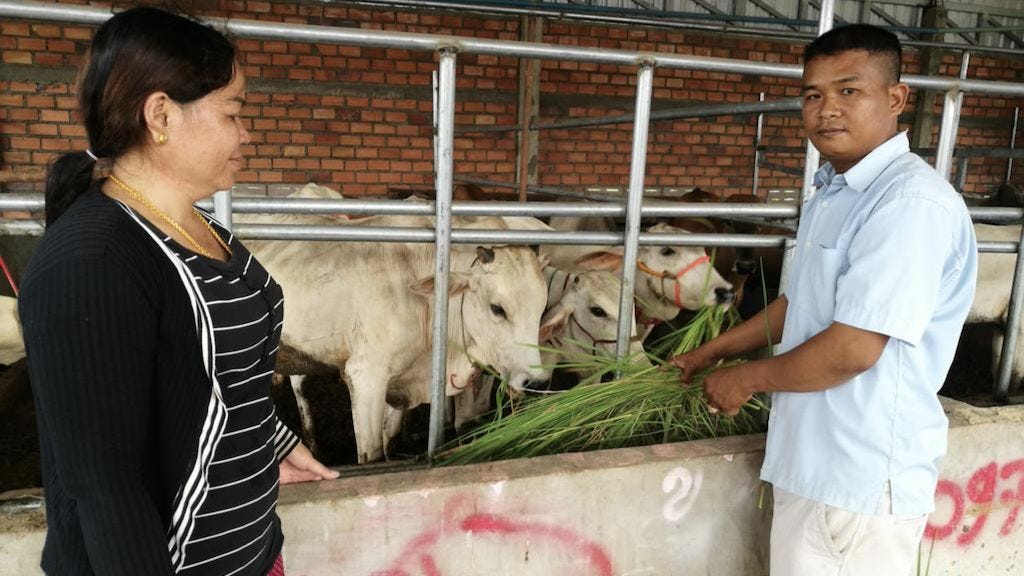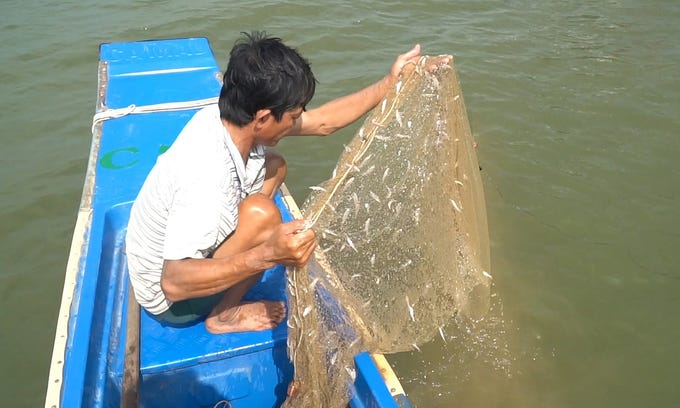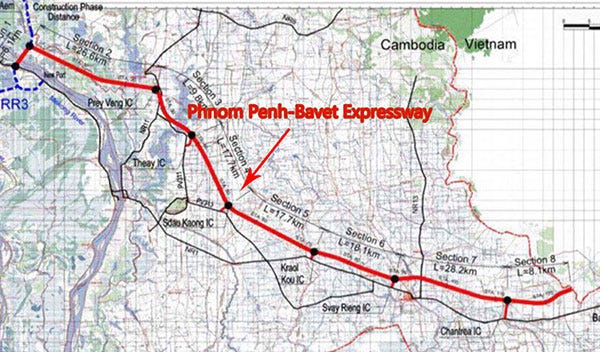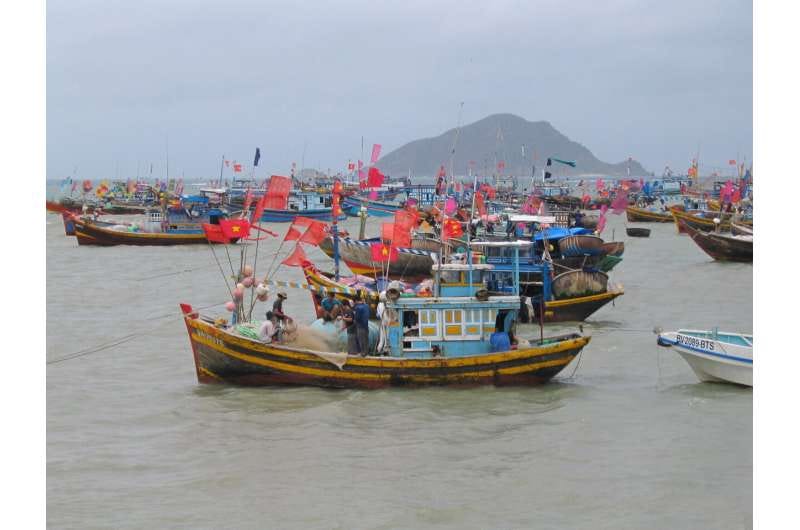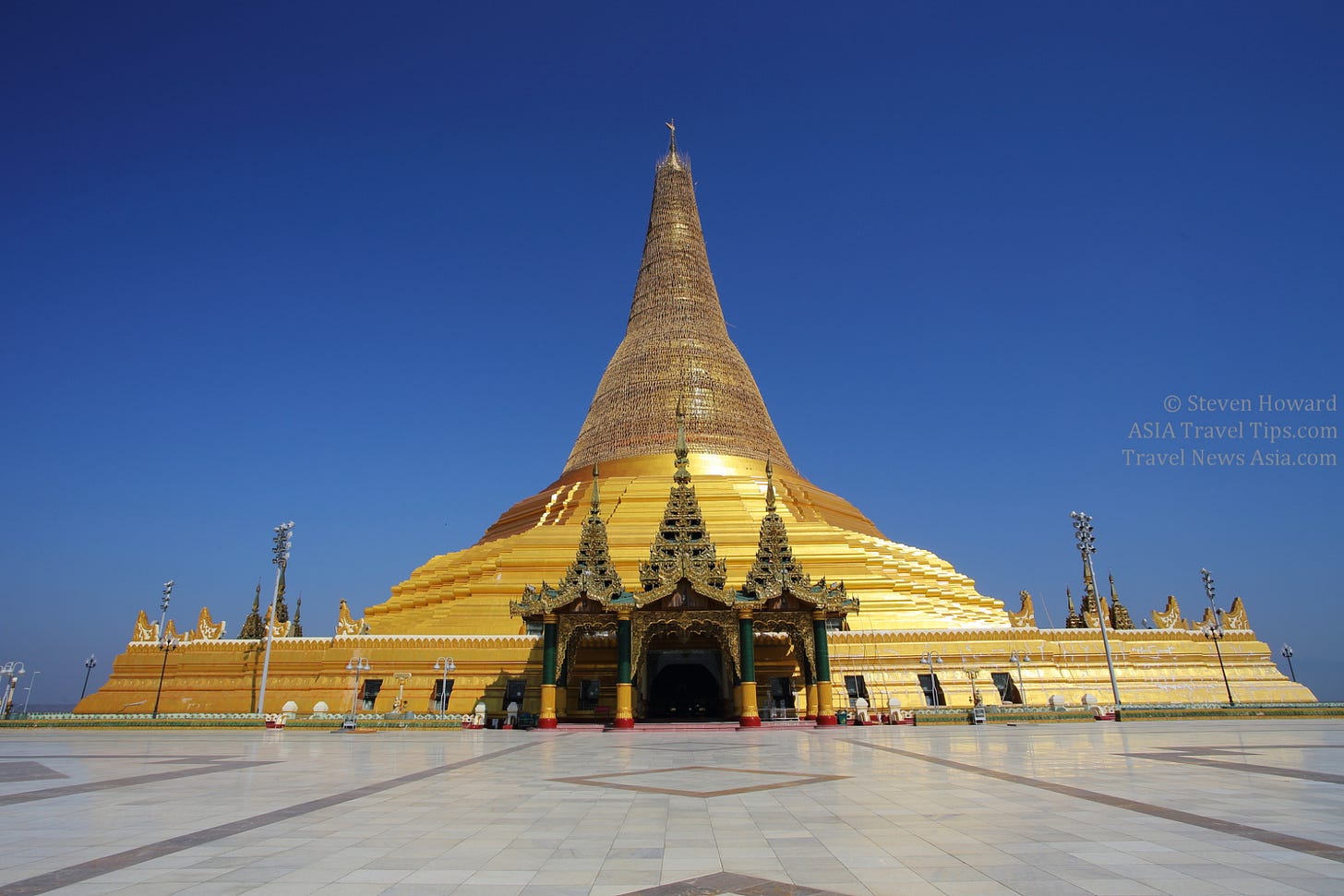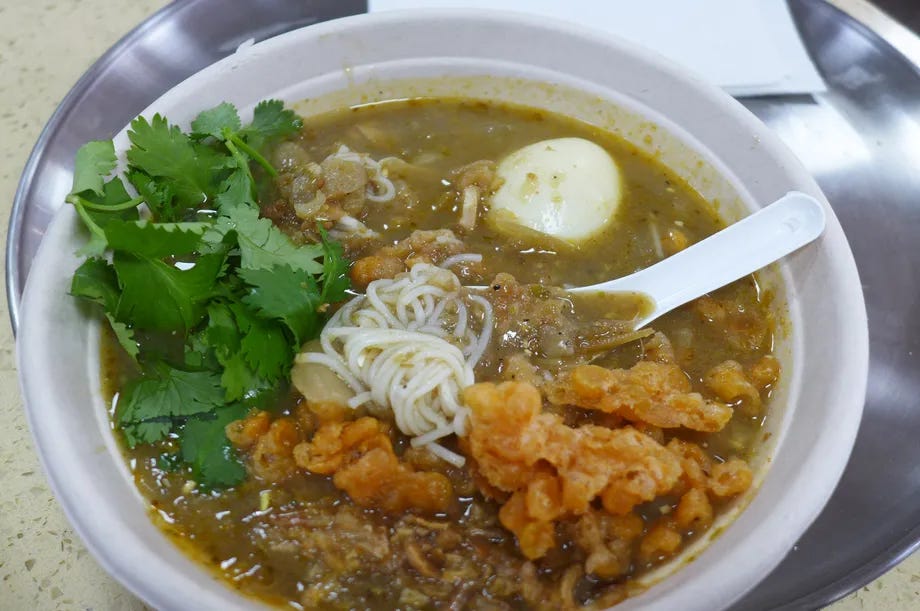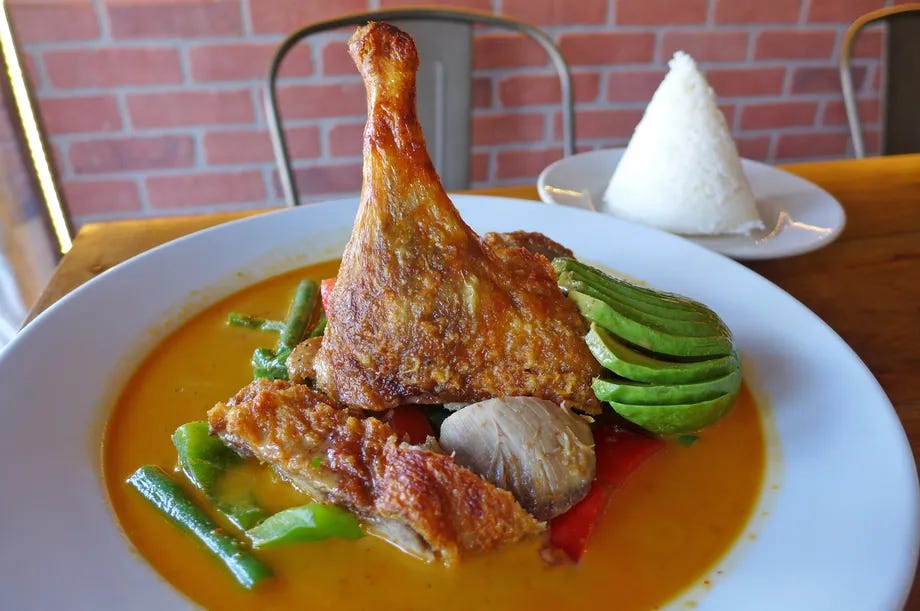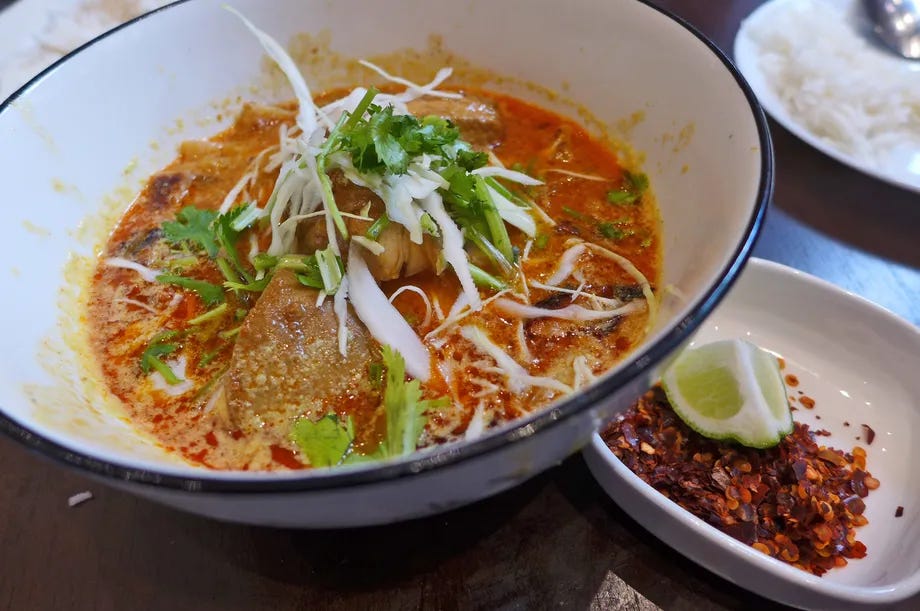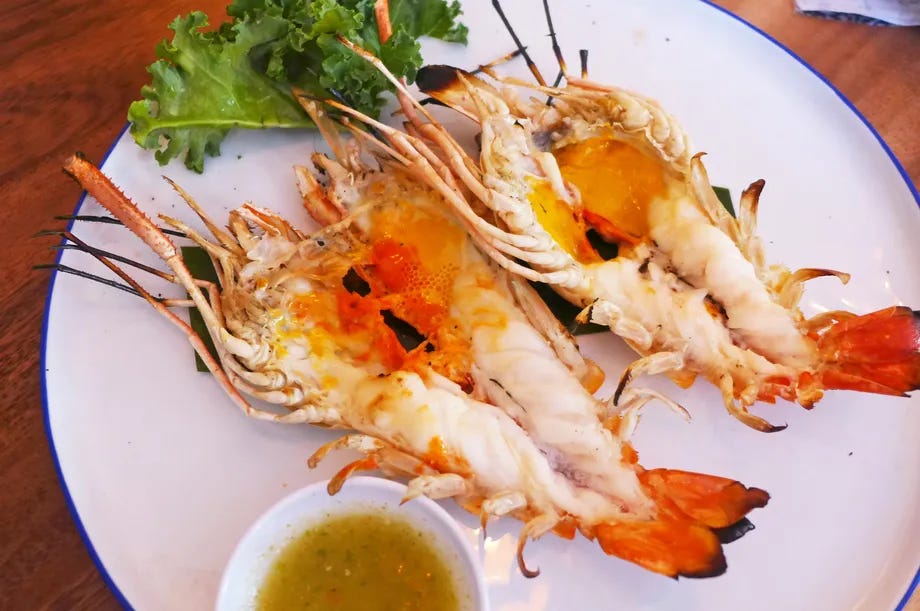A New Mekong Menu
Climate change and food security need green finance to ensure sustainable farm to table supply
UPDATE: The Long Mekong Daily takes a tour of the region to bring you a feast of Mekong sustainability news. First up, boosting livestock sub-sectors and food security. Four Mekong nations get together to protect the rivers ecological functions. The Belt and Road continues to lead the way on “green” financing and sustainability in global infrastructure and along the Mekong too. A new report looks at long-term predictions of Mekong flooding. Laos is fast becoming a major transport, agriculture and energy hub. Myanmar has stabilised and tourism is once again on the rise. And, last but not least, four mouthwatering Mekong dishes for every gastronomically inclined fan of the Long Mekong Daily.
Asian Development Bank provides US$62.9 million to Cambodia to boost livestock sub-sector to enhance food security and climate resilience
The Asian Development Bank has approved a $62.9 million package to help Cambodia enhance food security and promote inclusive economic growth by improving livestock health and value chains, and the formal trade of livestock and livestock products.
“The livestock subsector is crucial to sustainable rural livelihoods and food security in Cambodia, and it offers many opportunities for smallholder farmers, including women, and small- and medium-sized agribusinesses,” said ADB Principal Climate Change Specialist for Southeast Asia Srinivasan Ancha. "Nearly all cattle and buffaloes are owned by smallholder farmers, although pig and poultry production are increasingly becoming commercialized. ADB’s assistance will enable the subsector to tap into high growth potential brought about by increasing domestic meat consumption resulting from economic growth, urbanization, population expansion, trade opportunities, and progressive improvement in disease control and animal nutrition.”
The Greater Mekong Subregion (GMS) Cross-Border Livestock Health and Value Chains Improvement Project will directly benefit at least 40,000 households in Kampong Cham, Otdar Meanchey, Prey Veng, Phnom Penh, Siem Reap, and Takeo provinces by boosting investments in critical infrastructure, institutional and technical capacities, and enabling policies. It will also develop infrastructure in Kandal, Kampong Thom, and Pursat provinces to meet nationwide needs for veterinary vaccines and artificial insemination. The project will enhance productivity and resilience of the livestock subsector by reducing risks from transboundary animal diseases, zoonoses, and antimicrobial resistance; build up animal health monitoring and service delivery; improve food safety; and promote subregional cooperation in the GMS.
ADB’s assistance will promote climate-smart livestock production, which is an approach to transforming and reorienting livestock systems under climate change, while reducing greenhouse gas emissions per ton of meat produced; improve sustainability along the livestock value chain; and contribute to COVID-19 recovery efforts. It will also support the implementation of the One Health approach, which aims to sustainably balance and optimize the health of people, animals, and ecosystems; strengthen private sector engagement; and help transition livestock administration toward digital management systems and information services.
Read full article here.
Four riparian nations launch two new initiatives protect Mekong River
At the 29th Meeting of the Mekong River Commission Council held last week in the southern province of Ba Ria – Vung Tau, representatives of member nations approved a Multi-Year Work Plan (MWP) for 2023-2024 to assist every national agency working to implement the MRC's Strategic Plan (SP) 2021-2025.
The SP covers crucial areas for the Mekong River Basin to maintain its ecological functions, including: enabling inclusive access and use of its water and related resources; enhancing optimal, sustainable development of its water and related resources; strengthening resilience against climate risks like floods and droughts; and strengthening cooperation among all MRC countries and stakeholders.
The MRC Council's Chairperson for 2022, Vietnam's Minister of Natural Resources and Environment Tran Hong Ha, said the MWP "will kick-start the second important phase of the Strategic Plan." It is a key component of "concerted efforts and perseverance of member countries to work toward a sustainable and healthy Mekong River Basin," he said. Within the MWP for 2022, 158 tasks were laid out – of which 123 have already been completed by October.
The MRC council also approved the re-designed Core River Monitoring Network (CRMN). The CRMN, launched in 2018 and 2019, identified various inefficiencies in how each of the four member countries was addressing challenges, including: a lack of regional and national network integration leading to redundancies and indirect use of most monitoring data; concerns over human and technical capabilities; reliability and capacity of systems and the costs of updating equipment as a strain on national budgets; and ineffective alignment and integration among monitoring stations and their activities.
Access the full article here.
Belt and Road promotes “whole lifecycle” approach to project management.
China’s Ministry of Commerce and Ministry of Ecology and Environment joint guidance for Belt and Road partners to take a “whole lifecycle” approach to project management.
To implement the new development concepts and promote green development, the Ministry of Commerce and the Ministry of Ecology and Environment jointly issued the Guidelines for Green Development in Foreign Investment and Cooperation on July 15,2021. The full text is as follows:
I. Significance
Green development provides the necessary groundwork for sustainable development. Greening technologies and industries are at the top of the agenda of many countries. Achieving carbon neutrality has become a global priority with the green rules in international trade and investment evolving at an accelerated pace. China is building a sound, green and low- carbon circular economic development system at home while contributing to global environmental governance and fulfilling its international obligations. In a new era, only by practicing the concept of green development can we rely on outbound investment and cooperation to reinforce domestic and international circulations, pursue open development and take the lead in international cooperation and competition.
II. General Requirements
The greening of outbound investment and cooperation must be guided by Xi Jinping Thought on Socialism with Chinese Characteristics for a New Era. In the process, we must implement the spirit of the 19th CPC National Congress and the 2nd, 3rd, 4th and 5th Plenary Sessions of the 19th CPC Central Committee, Xi Jinping Thought on Ecological Civilization and the decisions of the CPC Central Committee and the State Council. We must stay committed to the new development concept, striving for the strong awareness of green development, efficient use of resources, strict protection of the environment and effective control of carbon emissions. We should work to showcase China’s leadership in global endeavor towards green transition and our commitment to building the world into a better and cleaner place and laying the groundwork for a new development paradigm.
Download the full report here.
Mekong Delta will continue to be at risk for severe flooding, study finds
The Mekong River Delta is the agricultural heartland of Vietnam; it is affected by droughts and flooding, which have become more severe in recent years. If severe weather events can be more accurately predicted, risk assessments in the regions can be improved. This, in turn, will reduce the negative effects of floods and droughts in the region.
A team led by Tsuyoshi Watanabe at Hokkaido University has revealed the clearest picture yet of how the El Niño Southern Oscillation (ENSO) affected rainfall in the Mekong Delta over the last hundred years. Their findings were published in the journal Scientific Reports. They correlated water salinity data from reef coral samples with historical weather records and uncovered that the ENSO has caused seasons of heavy and light rainfall, resulting in patterns of both flooding and droughts, respectively.
The ENSO occurs in the central and Eastern tropical Pacific ocean, in irregular cycles of two to seven years. It consists of the El Niño (warming of the ocean surface), La Niña (cooling of the ocean surface) and neutral (neither warming, nor cooling).
"We found that heavy rains and flooding have become more severe in recent years, driven by changes in the ENSO due to global warming," said Watanabe, corresponding author of the study. "The Mekong River Delta will continue to be faced with a higher risk of severe flooding."
El Niño and La Niña have significant effects on weather patterns and extreme weather events in these regions. Understanding the weather patterns caused by ENSO in the Mekong River Delta (MRD) is critical to ensuring a stable food supply.
Read full article here.
Laos can leverage regional position to boost growth
Laos, a member of the Greater Mekong Subregion (GMS) Economic Cooperation Programme, can leverage its regional position to grow its economy and increase resilience to external shocks, according to a new Asian Development Bank (ADB) report.
“Leveraging Benefits of Regional Economic Integration” shows how Laos can leverage its regional position to boost trade, increase agricultural production, and harness the power of its cities to promote inclusive and equitable growth.
It details how improving competitiveness, community and connectivity can help converge the country’s income and living standards with other GMS member countries.
The report also discusses the potential for Laos to upgrade its value chain positioning, diversify its industries, and capitalise on regional cooperation to achieve its development targets.
“The Lao PDR is strategically located in the heart of the GMS. Along with the country’s neighbours, the subregion serves as a major trade partner with the rest of the world. This represents an opportunity to leverage benefits from regional cooperation to escalate development progress,” said Sonomi Tanaka, the ADB Country Director for Laos.
“ADB has been a key partner in supporting development policy coordination in the subregion, including through defining a practical, goal-oriented work program for promoting regional cooperation.”
The regional position of Laos offers several opportunities. The ADB study states Laos’ current trading basket indicates there may be unexploited potential for expanding into more diverse products which are traded with regional and global partners. A potential pathway for further economic diversification is through developing shared production and export capabilities via greater regional cooperation.
The ADB report highlights the importance of upgrading and diversification through integration with value chains.
Download the full report here.
Myanmar Promoting Tourism with Fam Trips for KOLs and Travel Agents
Myanmar Airways International (MAI) is working with the Myanmar Tourism Federation (MTF) and Myanmar Tourism Marketing (MTM) to promote the country to overseas travel agents and social influencers.
Last month, MAI organized KOL and familiarization trips from Vietnam and Thailand. Normally, tourists from those two countries visit Yangon, Bago and Golden Rock, but during the fam trip they had the opportunity to visit Bagan and Mandalay thanks to the support from the airline, hotels, travel agents and restaurants.
“Visit to Bagan was an eye-opening and wonderful experience we had during our Myanmar visit,” said Tran Viet Phuong, a KOL from Vietnam. “It’s amazing to see the beauty of Bagan as you watch the sun slowly set behind the ancient Pagodas. The magic of Bagan has inspired visitors to Myanmar for nearly 1000 years.”
Tour guides are among the most severely impacted professions during the pandemic. For Myo Kyaw Aung the fam group was his first tour guide trip since COVID19 started back in March 2020, and he believes tour guides will return when demand grows firmer, although admits that may take years.
Tanes Kumar, CCO of MAI, said, “These fam trip activities are one of our initiatives to promote the tourism growth of Myanmar. Hence, we will continue to work with progressive partners in Myanmar’s travel and tourism sector to push our direct flights to position Myanmar as a key regional destination.”
Myanmar has relaxed the enrty requirement for travellers to take tests with RDT if they show a vaccination record card as proof of being fully vaccinated.
“Recent years have been challenging for Myanmar’s tourism industry but there is still great hope and positivity and these fam trips will showcase diverse collection of authentic experiences in Myanmar among the travel agents to develop attractive packages for the Myanmar market,” said Myo Thwin, Chairman of Myanmar Tourism Marketing.
Myanmar is one of the most beautiful and relatively undiscovered destinations in ASEAN. The country has some of the best beaches, wildlife sanctuaries and incredible cultural and historic sites for travellers to explore.
Read the full article here.
Mohinga: The signature soup of Myanmar, is harder to find. It is one of the most complex dishes imaginable, a soup of mashed fish flavored principally with ginger and lemongrass, layered with rice noodles and chickpea-flour fritters that go crunch, crunch! Is there a more tasty or nourishing soup with boiled egg on the planet?
Duck panang avocado curry: The curries of southern Thailand’s Malay Peninsula have emerged in their own right. A case in point is this red curry from which rises up an entire half duck with crisp skin: a nice contrast to the green snap beans and creamy slices of avocado that accompany it.
Chicken paratha: This wonderful recipe from Myanmar is transformed into delightful little dumplings in this spicy red stew enhanced with herbs and shredded cabbage, with red pepper flakes on the side in case you want to ramp up the heat.
Thai river prawns: Regional food is flooding many menus. These river prawns native to the Mekong River are like little lobsters, tasting of butter and oozing roe, served with a pungent dipping sauce.




